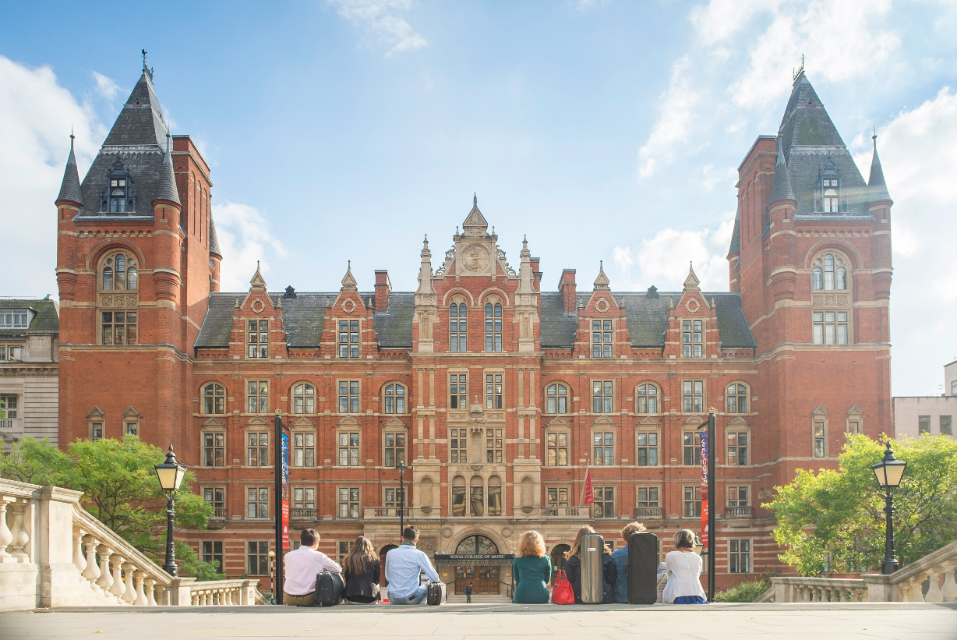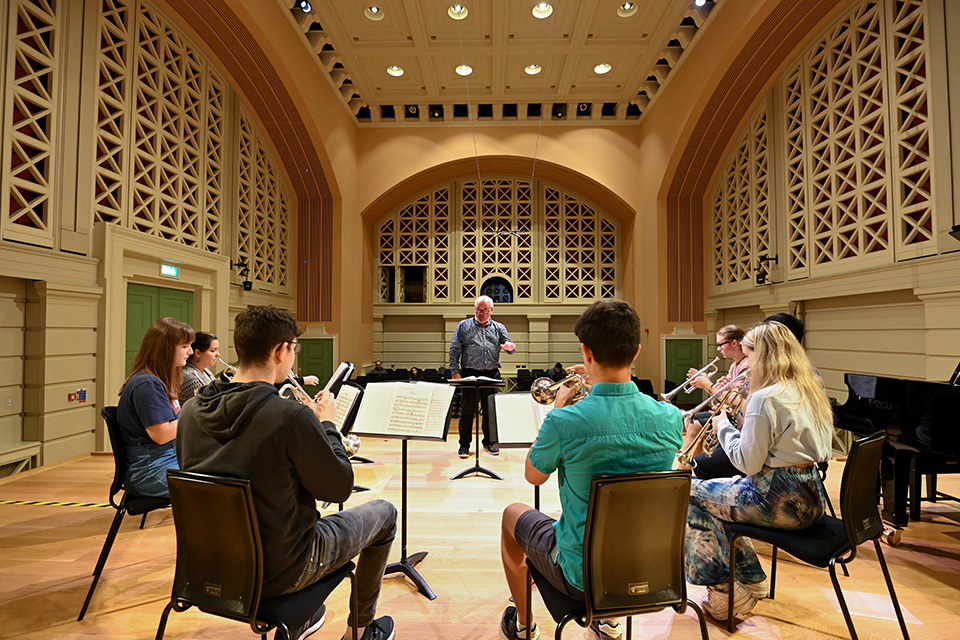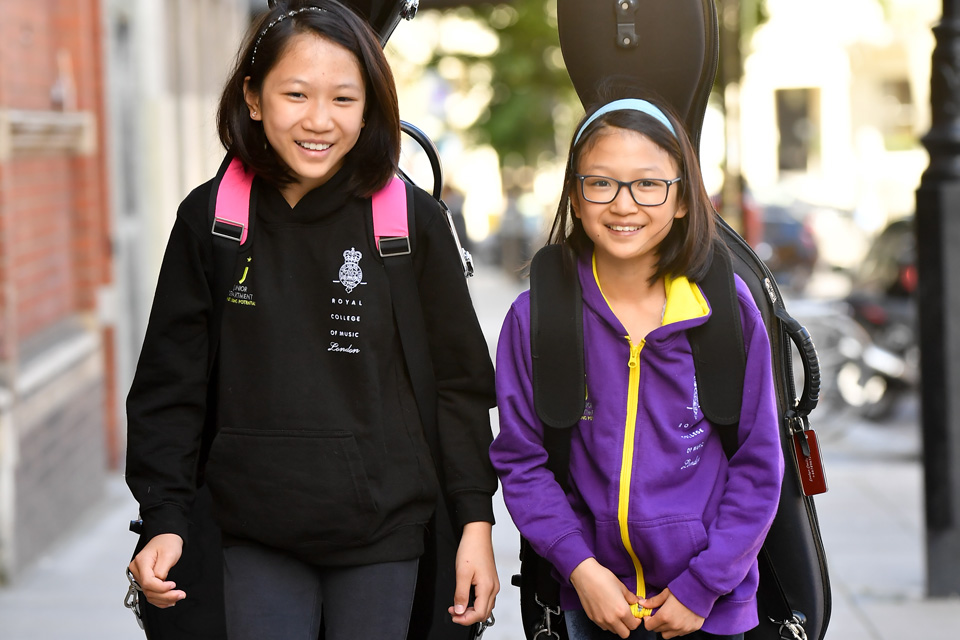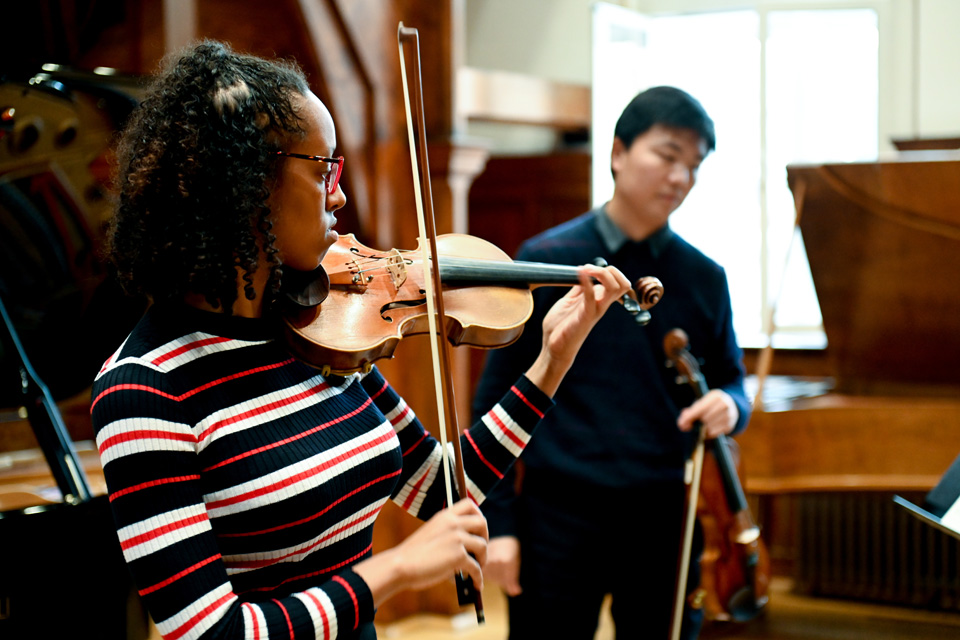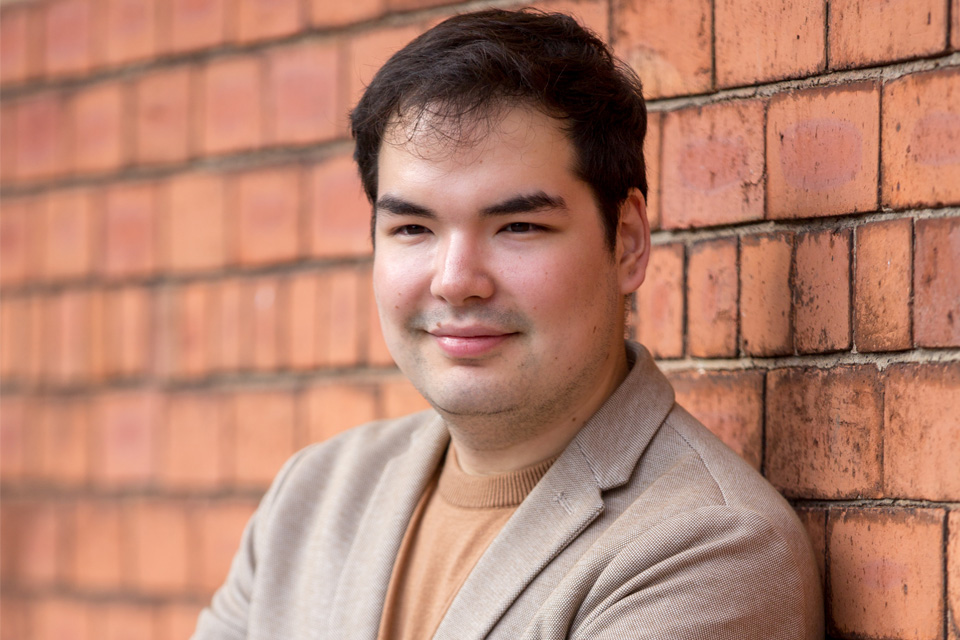Transformational spaces
Share #UpbeatOnline
After four years of construction work, and a project that spanned nearly a decade, the More Music development of the Royal College of Music campus is complete. Upbeat takes a tour of some of these transformative spaces, and learns about some of the donors who have made the development possible.
From winching materials over the roof of the College, to continuing building work during the pandemic, the More Music: Reimagining the Royal College of Music development has not been without its logistical challenges – but the physical transformation of the South Kensington campus has now been completed on schedule and within budget.
In April 2021, two new performance spaces, a new ground floor café, the Cotes-Burgan Atrium, and practice and teaching rooms were opened to staff and students. The College also launched its new venue hire offering, enabling others to make use of the unique spaces, forming an important, sustainable strand of income.
The final piece of the puzzle was welcoming in-person audiences. This term, the new, interactive Royal College of Music Museum opened its doors, receiving a wonderful flurry of very positive media coverage, and public audiences have attended a wide range of events and performances in the new venues.
Two new performance venues
Since opening in April, the Performance Hall and Performance Studio, which are fitted with newly integrated technology, have allowed the RCM to adapt our teaching and learning spaces, delivering high-quality online tuition and broadcasting a diverse repertoire of digital performances. Since the summer, the spaces have been used for live recordings, filming for the RCM’s In Focus series, exams and rehearsals.
[image1]
From September, the venues were able to host live performances open to the general public and audiences have enjoyed a varied programme of chamber music concerts, masterclasses and lectures in the new auditoriums.
Students are already starting to reap the benefits of the new venues. For fourth-year undergraduate Beth Stone, who studies Flute and Baroque Flute, these performance spaces are her favourite part of the new campus.
‘For me, having beautiful locations to perform and express musicality is an important part of receiving inspiration to continue creating,’ she says. ‘It’s exciting to have rooms that have capacity to hold a well-sized audience and that have such wonderful acoustics.’
‘It has been especially great to have performance class in bigger spaces that give more of a realistic performance experience. It’s a more lifelike, helpful learning experience that exposes us to what the musical profession will be like.’
[image3]
Practice pods
Also added as part of the More Music building development was a brand-new suite of sound-proofed practice pods. The RCM was delighted to receive ten Blüthner Model A upright pianos from the Alfred Reinhold Foundation for this space, named The Blüthner Practice Suite in recognition of this gift, providing high-quality instruments for our talented students.
[image4]
Several individual practice pods have been named to honour generous supporters who have left gifts to the College in their Wills, including Sheila and Christine Partridge, Helen Curry, Una Warnes FRCM, Audrey Goodfellow and Enid Faithfull.
[image5]
The 1851 Courtyard
At the heart of the new building development is the 1851 Courtyard, named in honour of a gift from the Royal Commission for the Exhibition 1851. With original red brick features, the courtyard is accessed from the new light and airy café and is a social space for students, staff and visitors to enjoy.
[gallery]
Third-year pianist Sophia Lim explains how the new facilities are impacting her learning – and wellbeing. ‘I enjoy staying in College because of how inviting the new spaces are. After a long day of classes and practice, I can sit in the café or the outdoor space with wonderful sunlight and enjoy spending time with friends or doing some work.’
‘The space has higher capacity so more people are around College; the energy and atmosphere around College has become incredibly lively, and it is quite a space to work and create music in.’
The Cotes-Burgan Atrium
With its magnificent glass roof designed by John Simpson Architects, the triple-height Cotes-Burgan Atrium floods the Royal College of Music with light.
As well as providing a new recital space for students, the atrium provides access to the RCM Library and the RCM Café (which is fully accessible) and leads to the outdoor 1851 Courtyard seating area. Combining original features of the building with state-of-the-art architecture and bringing the outdoors indoors with its innovative use of light, the space is a welcoming hub within the College.
[image6]
The story behind the name
The development of the Cotes-Burgan Atrium was made possible by the transformational legacy gift of £3.2 million from RCM alumna Celia (née Cotes) (1929–2015) and Frederick Burgan (1914–2008) – the single biggest gift to the More Music Campaign. The space named in their honour is brought to life by their heartwarming story.
Celia Cotes studied at the RCM from 1948 to 1951, studying the piano with Olive Bloom and violin with John Dyer. She was always fiercely proud to be an RCM alumna and wanted to give back to the College, enabling other young musicians to receive the opportunities she’d enjoyed in her life.
Celia met Frederick Burgan in the Second World War, when her parents used to invite soldiers to their house for Sunday lunch. Following exposure to a large explosion in the Second World War, Frederick was left with a significant hearing impairment, and Celia was told he’d been tragically killed.
By chance, they met again later in life, and fell in love for a second time. Thanks to technological advancements, Celia made sure he was given effective hearing aids, which enabled Frederick to listen to music again with her for the first time since the blast.
Their shared love of classical music – particularly the piano – meant he was delighted to reflect Celia’s affection for the RCM through a generous gift in his Will. In addition to funding the Cotes-Burgan Atrium, their bequest also left money to endow a piano scholarship in their name in perpetuity, enabling a countless number of future talented young musicians to fulfil their potential.
‘I am so grateful to Celia and Frederick Burgan for leaving a legacy to the RCM,’ says current Cotes-Burgan Scholar Paul Mnatsakanov. ‘Thanks to their generosity, I’ve been given a scholarship with amazing opportunities at the College.’
[image2]
[additionalboxnobutton]


